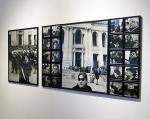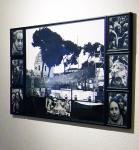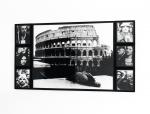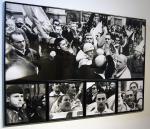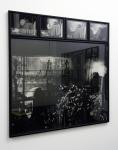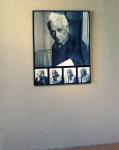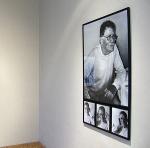Photographic Work
Photographic Work
The Polyptych
The earliest polyptychs date to just after the year 1300. This is when this type of image making began to be promoted by Sienese artists working on commissions for Dominican and Franciscan churches. One of the earliest examples of this multi-image story telling is Duccio’s Polyptych No. 28. The context of Masi’s first photographic polyptych, which was shot in 1998, curiously is about the Palio of Siena – Power and Glory, the face of the Palio, 2001.
Stories triptychs
This is a series of works, which are made up of individual images that come from catch or documentary-style street photography, meaning that none of these individual images has been set up or premeditated in any way. These random images are selected, organised and arranged in groups of three forming a triptych.
This grouping of images propose a series of fictive tales suggesting sentiments of joy, anticipation, desire, loss, distrust, suspicion, fear and perhaps other disjointed emotions. This structure is a multi-image presentation, which among other things, questions how a still image might interestingly emulate a moving image.
All of these works incorporate real time and space. They are derived from pre-existing visual images, which are edited utilising narrative conventions to weave a story.
Other photographic installation polyptychs by Denis Masi include:
Rome: Foro Italico, 2003
Naples: Capodimonte, 2003
Fantasia, 2002
Portrait of Roberto Sebastian Matta, 1996/2004
Portrait of Franck Horvat, 2006
Triptych Portrait, 2007



